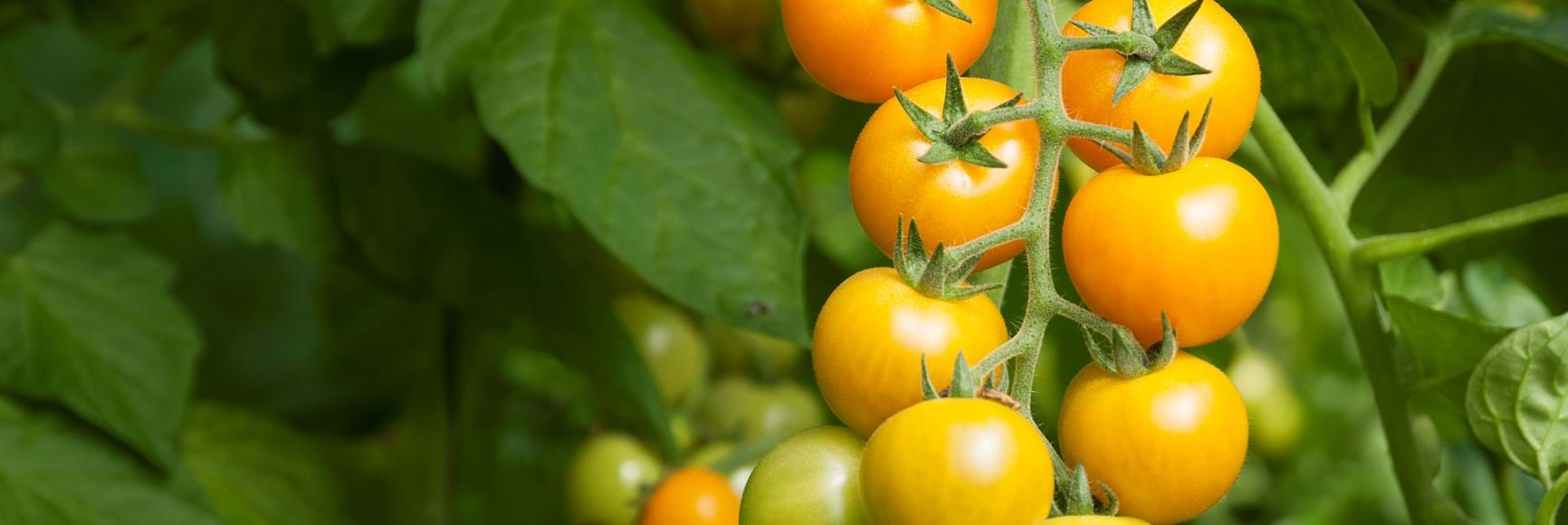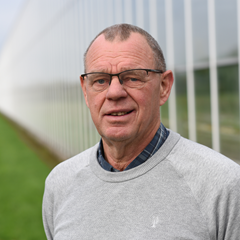It is a surprising fact that both during the first outbreak of the coronavirus (Covid-19) in China at the end of 2019, and when the first case of the Tomato brown rugose fruit virus (ToBRFV) appeared in Germany in the summer of 2018, crop advisor Jan Banken of Horti-Consult International was a lot closer at that moment than he could have thought. Fortunately, he can laugh about it at the beginning of 2021, a year in which viruses continue to draw attention. “I quickly gained experience and had a head start that I would rather not have had.”
'Foreseeing the future'
Since Horti-Consult International's founding in 2006, together with colleagues Jan Verbaarschot and Gilbert Heijens, Jan has visited many growers. Growers in the Netherlands, Belgium, and Germany, the main region for the advisory team that now is composed of seven members for advising growers worldwide. Jan enjoys life as an advisor and has seen many developments. And in a sense, he has managed to 'predict' some of them with his colleagues, he says with a wink.
"About every five years we organize a symposium with clients in which we update each other on current developments. In retrospect, we always chose the right subject. The first time we discussed scaling up, and not much later you saw that development really take off, also due to the availability of increasingly cheap Polish labor. Then it was about AR-glass as innovation and what happened? Many new greenhouses were fitted with this glass. And in 2016, at our third symposium, we discussed LED lighting. And look: more and more growers are finding their way to LED.”
Jan quickly adds that he can't foresee the future, but it shows that horticulture is not at a standstill, as far as anyone would doubt this. What would become the new topic of a symposium when looking at the abovementioned? “That would probably be in the direction of hybrid lighting with LED, data-driven cultivation, and Next Generation Growing. All developments that we are increasingly focusing on with our clients. But beware, we still have to fulfill the fourth ‘forecast’, Jan laughs.
ToBRFV
We continue with a subject that is no laughing matter for growers: ToBRFV. Jan notices that it still worries growers. "The risk of virus and how to deal with it are always subjects that I talk about with clients. I notice that growers are concerned about this and tomato growers are also looking around to switch to another crop, although most of them remain faithful to tomato cultivation.”
Then we must deal with the threat of the virus in a correct manner. “For one of my clients in Germany, who turned out to be the first one in Germany where the virus was found, they have been able to make the greenhouse virus-free after thorough cleaning and disinfection. I see that this is more difficult in the Netherlands. A part of this is that more growers have lighted cultivations. As a result, there is almost always a crop in the greenhouse. Cleaning and disinfecting is just harder in that case.”
As said, Jan inadvertently gained experience with ToBRFV quickly. Soon after he talked with a cleaning company that had experience in cleaning hospitals. "A grower who wants to work hygienically should also be looking to use a similar hygiene protocol as in hospitals. The manager of the cleaning company told me that it was all about ‘cleaning, cleaning, cleaning’ and then cleaning another two or three times, and then disinfecting.
This is what will have to be done in greenhouses, although there is always pressure because an empty greenhouse 'costs money' and crop rotation has to be done quickly. What remains important in this battle for hygiene is to continue to share knowledge to learn from each other.” In recent years, Jan and the team have seen that companies have grown and that the marketing structures have also made them more competitive towards each other. “This hinders the exchange of knowledge, and that is a pity.”
Hybrid
Fortunately, it is not just viruses that Jan discusses with his clients, tomato growers in the Netherlands, Belgium, and Germany. "Now, you can also see Next Generation Growing and hybrid lighting being applied more and more. The barrier for investing in LED has been reduced by the rise of more providers and thereby lower investment costs, although choosing the right lamp remains a challenge.
It is my task to work with the grower and structure the greenhouse lighting in such a way that, on the one hand, the lighting conditions and distribution are good, and on the other hand, adapting cultivations to the new situation. With extra lighting, you have to trim differently, plant closer together, and with more plants per square meter. Subsequently, you review the results every year and adapt where necessary. Which is an interesting exchange to have with a grower."
There are clear differences between his clients. Some large growers continuously introduce the latest innovations directly, but also more growers who follow. And then there are considerable differences between growers in the Netherlands, Belgium, and Germany. "Belgian growers have an advantage regarding energy compared to growers in the Netherlands, because CHP is more subsidized and has slightly lower labor costs. In Germany, it's different. There, electricity is expensive, and therefore it is more difficult to make lighted cultivation profitable. However, a German grower has the advantage that he receives more for his own product in Germany than imported product. For them, that is an advantage compared to growers in the Netherlands and Belgium.
Give yourself a buffer
With the emergence of lighting, there are no quiet periods for Jan, who has a more or less fixed visiting schedule for his clients coming year. "Year-round, there is always a grower that is planting or starting a new lighted cultivation. The first ones already start in May.”
Horti-Consult likes to keep its main business in the Netherlands, Belgium, and Germany. “That is our most important working area. There are still many developments in this area and we like to be present. Furthermore, we are spreading our wings in more areas in the world. We are receiving more questions from other regions and we would like to do something with this."
Jan is positive about 2021, despite the risk of virus. "I'm positive. Together with the grower, it is ultimately most important to set up a good cultivation. My advice is to give yourself a buffer when cultivating. If you do that, you're more flexible and the crop can handle a setback such as a virus or a disease more easily. I think a little more certainty is always more sensible than taking a lot of risks.”
Published on Hortidaily 19 January 2021

